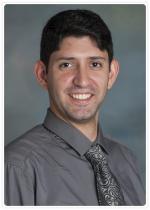On February 25, 2015, after several years of contentious debate, the FCC adopted new rules about so-called net neutrality, the Internet’s guiding principle. The rules, which went into effect June 23, 2015, stipulate that broadband providers cannot block access to legal content, impede legal Internet traffic, or give preferential treatment in exchange for money or other consideration.
But CSUN’s Vahab Pournaghshband isn’t taking Internet service providers’ compliance for granted. Instead, the CSUN assistant professor of computer science, who is passionate about net neutrality, is responding proactively. Noting that in the past, some U.S. ISPs were found to be violating net neutrality but were not forthcoming about it, he’s intent on developing a novel method that will enable end users to detect violators and will work even if ISPs try to hide what they’re doing.
“We are actually talking about a global issue,” he says. “It’s not just a problem in the U.S. but in other countries as well.”
 An illustration of strict priority queueing, one way ISP’s violate net neutrality.
An illustration of strict priority queueing, one way ISP’s violate net neutrality.
Pournaghshband is the 2015-16 college research fellow, and he is receiving release time during the spring semester to pursue his project, titled “Detecting Net Neutrality Violators in a Dynamic Environment.” Although he is not the first researcher to tackle the question of net neutrality violations, he explains that the papers published to date have assumed that the ISP is static—that an ISP that is “mistreating” data packets will continue to do so even when experiments are being run to detect the practice. But, he says, that strategy also assumes that ISPs, in turn, are not actually trying to detect the monitoring. If they want to evade detection, they might, for example, be able to fingerprint the test traffic that monitors send. They could then change their behavior and treat all traffic normally during the detection period to conceal the violation and return to mistreating packets and violating net neutrality after the test ends.
 A mathematical model to describe net neutrality violators, developed by Vahab Pournaghshband.
A mathematical model to describe net neutrality violators, developed by Vahab Pournaghshband.
Previous research into detecting discrimination on the Internet has focused on very specific scenarios, Pournaghshband says, which are only useful for detecting particular sorts of differentiated service. But his goal is to develop an umbrella method that will detect multiple ways that companies might mistreat data packets.
“I want to come up with a general framework so that instead of looking just into specific problems, we can find a common ground and provide one solution that can be applied to a large set of them,” he says. “This is actually the first research that aims to do that.”
Even though his release time for the project didn’t start until the spring 2016 semester, he began working on the project last year. “I didn’t want to wait,” he said. “I needed many things to be ready before I actually started.”
Those things included forming a research group with a few students, including a computer science graduate student whose master’s thesis is devoted to the project, as well as laying the groundwork for a simulation environment and a test bed for testing the methodology he and his group eventually develop. But he cautions that the work of developing an effective tool that will allow end users to detect net neutrality violations won’t be done this year. It will require a long study and lots of collaboration to gather the extensive data needed to perform detection on a large scale. He’s in this for the long haul, however, because the way he sees it, the stakes are high.
“If Internet companies are discriminating on content, they could slow sites with content they don’t like,” he says. “And that is a form of censorship.”
Welcome to the 2015-16 edition of Spectra
March 25, 2016The Beat Goes On in Redesigned Programming Class
March 25, 2016CCPT grant starts off on the right foot
March 25, 2016
Leave a reply Cancel reply
-
CCPT grant starts off on the right foot
March 25, 2016 -
Designing a helping hand
February 22, 2011 -
Other Accolades
November 30, 2012


